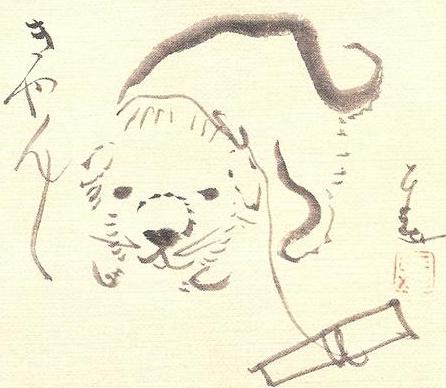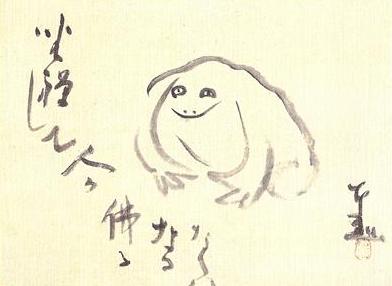Japan art and Sengai Gibon: Buddhism and Meditating Frog
Lee Jay Walker
Modern Tokyo Times

The holy Rinzai Buddhist Monk, Sengai Gibon (1750-1837), reached out to ordinary lay people in various ways. In terms of art, even if Sengai didn’t particularly deem his work with being within the boundaries of serious art, he sought to connect with the soul through humor and thought-provoking ideas related to simplicity.
Sengai had little time for being overtly dogmatic. Nor did he seek the highest order within the world of Rinzai Buddhism. Instead, he focused on what his heart – and holy teachings – taught him.

Art enabled Sengai to extend his reach to ordinary people and children while passing through this world. It was an extension to overcome the structural hierarchy that provided a gulf between esteemed monks and lay people. Therefore, the artistic world of Sumi-e emboldened Sengai to spread the message of Buddhism by connecting with the souls of ordinary people.
Sengai said, “He who comes knows only his coming, He who goes knows only his end. To be saved from the chasm, Why cling to the cliff? Clouds floating low never know where the breezes will blow them.“

The Meditating Frog (above) can have different meanings to each viewer. However, it appears that Sengai is alluding to monks merely sitting around and meditating – while forgetting the humanity of Buddhism and the realm of “actions.” Therefore, the Meditating Frog can’t become a Buddha because his meditation is creating a distance to himself – ordinary lay people – and achieving only an elitist mindset that can’t connect to the world outside.
The words imply the opposite. Hence, by sitting in Zen medication a human becomes a Buddha. However, given the humor angle of Sengai – and his lack of elitism: he didn’t seek the solace of highly esteemed Buddhist temples to leave this world behind. Instead, Sengai met individuals through the prism of art and reached the soul of individuals he met. Therefore, even the words can be deemed a different mirror to what seems obvious.

The Fukuoka City website says, “Sengai was born in Mino Province (now Gifu Prefecture) in 1750 and became a monk in the Rinzai school of Zen Buddhism at the age of 11. After traveling throughout Japan on foot, he ended up in Hakata at the age of 39, and after becoming a monk at Shofukuji Temple, he remained in the city for the rest of his life. He is said to have only picked up the brush in his late 40s, but he left behind more than 1,000 paintings and works of calligraphy by the time he passed away in 1837…”

PLEASE DONATE TO HELP MODERN TOKYO TIMES
Modern Tokyo News is part of the Modern Tokyo Times group
DONATIONS to SUPPORT MODERN TOKYO TIMES – please pay PayPal and DONATE to sawakoart@gmail.com
http://moderntokyotimes.com Modern Tokyo Times – International News and Japan News
http://sawakoart.com – Sawako Utsumi’s website and Modern Tokyo Times artist
https://moderntokyonews.com Modern Tokyo News – Tokyo News and International News
PLEASE JOIN ON TWITTER
https://twitter.com/MTT_News Modern Tokyo Times
PLEASE JOIN ON FACEBOOK